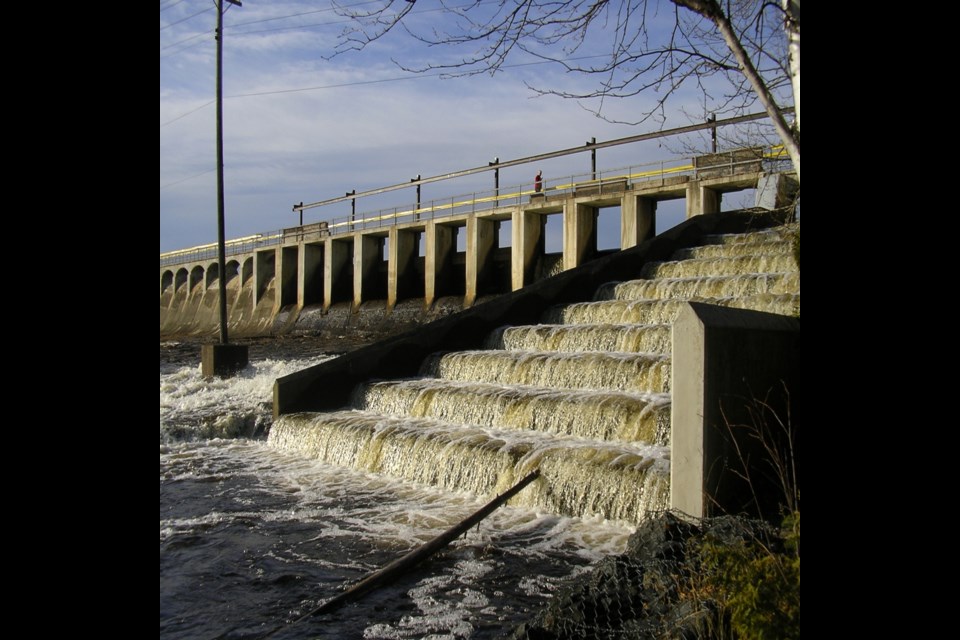THUNDER BAY — The fish ladder at the Boulevard Lake Dam needs more water.
That's the conclusion of consultants who studied the operation of the fish passage for the North Shore Steelhead Association.
The NSSA was formed in 1973 as a non-profit group with the primary goal of protecting this area's migratory rainbow trout (Steelhead) fishery.
Spokesperson Frank Edgson says the group has been concerned for some time about the design and functionality of the fishway, which was built in 1991-92.
"No studies were ever done post-construction as to the efficiency of fish passage. After almost 30 years of observing the ladder and struggling with the city to have it function as efficiently as we could, we decided to get expert advice," Edgson told TBNewswatch.
A study was conducted by two independent hydraulics consultants who also teach at the University of Iowa.
Edgson said they made several recommendations, the most important being nearly a three-fold increase in the flow rate within the ladder, from 0.4 cubic metres per second to 1.5 CMS during the spring and fall fish passage seasons..
He explained that the flow rate has varied at times because the system for controlling the waterflow involved the manual installation or removal of stoplogs.
"The city would have to send a crew over to the fishway and haul up a log. The logs were 12 inches so there wasn't really very much control of the waterflow, until the water level in the lake itself dropped to a certain level. There was an orifice in one of the stop logs, and the size of that opening was designed to allow only 0.4 cubic metres per second."
During excess water flow in the spring, Edgson said, the city would release it over the other sluice gates while maintaining the flow down the fishway at 0.4 CMS.
He said the consultants feel that's not enough.
"What it means is that the 'attraction flows' coming over the last portion of the ladder to where the river is may not be enough to attract fish to try to jump into the fishway. If it's a heavy, pounding flow, they're more likely to check it out" and proceed up the ladder to look for a spawning area.
Edgson said that without a proper flow, fish may just turn around in the Current River and spawn downstream or leave the system completely and look for another river.
Decommissioning of the hydro plant should help
"We don't know how many fish are actually going up the river...the city doesn't know, and the MNRF doesn't know. We are third parties to this. The fishway is owned by the city and they answer to the Department of Fisheries and Oceans and the Ministry of Natural Resources."
He also alleged that "there was a terrible history of mismanagement" of the system over a period of years when a small hydro plant was in operation, and water was needed to operate the turbine.
The study's authors suggest that the decommissioning of the powerhouse will be beneficial to fish passage by freeing up more water.
They also raised the option of structural modifications to the fishway but said further study is needed.
"Now it's just a matter of us trying to come to some agreement for the water flow. That's why this report and the recommendations of the consultants are important," Edgson said.
He said he understands there is impetus now to increase the water flow on a more consistent basis, but he has not received confirmation that any decisions have been made.
Edgson believes it's possible progress could be stalled by the requirements of the environmental assessment for the rehabilitation of the Boulevard Lake Dam.
But he said he's pleased with how the reconstruction of the dam has been handled from the perspective of water flow.
He said the NSSA is also "thrilled" that the project includes the installation of automated gates in the sluiceways, because "that will give them the opportunity to tailor flows more precisely, and make sure they stay within the defined boundaries."
The NSSA received funding for the study from the federal government's Great Lakes Protection initiative.
The findings have been passed on to all stakeholders.
A spokesperson for the City of Thunder Bay did not immediately respond to an inquiry from TBNewswatch.
However a city representative said last month that work on the dam has been halted until June 21 so as not to disrupt the spring spawning run.
